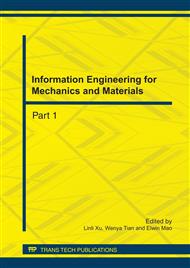p.1278
p.1284
p.1289
p.1295
p.1300
p.1305
p.1310
p.1315
p.1320
Research on the Disassembly Sequence Planning for Mechanical Product
Abstract:
Mechanical products have been inevitably disassembled when they are regarded to be recycled or repaired. The disassembling procedure must be decided no matter what way is used to disassemble. The key is to decide the disassembly sequence for parts/components. In order to generate the disassembly sequence rapidly and correctly, similar thread binary tree and graph algorithm are used to establish the model of disassembly after analyzing the characteristics of Mechanical products. Firstly, generate the related matrix obtained from the 3D CAD assembly model; secondly, transform the undirected graph to the directed graph based on the practical constraints between parts/components; finally, search the restrictions among the directed graph and generate the efficient disassembly sequence. A prototype system of disassembly sequence planning based on UG was implemented which has the functions such as parts and assembly information extraction, definition constraints between components, disassembly sequence planning and etc. The centrifugal lubricating oil filter case study proves the validity and feasibility of the proposed method.
Info:
Periodical:
Pages:
1300-1304
Citation:
Online since:
July 2011
Authors:
Price:
Сopyright:
© 2011 Trans Tech Publications Ltd. All Rights Reserved
Share:
Citation:


